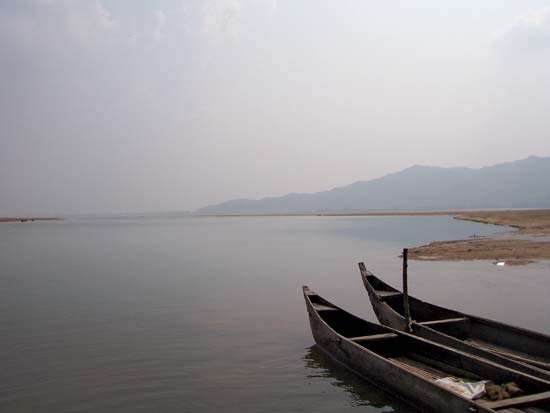Bhubaneswar/Raipur: At a time when the dispute between Odisha and Chhattisgarh governments over Mahanadi waters is rife and is being heard by a Tribunal, participants attending a roundtable held at Raipur have urged upon the governments to keep the doors to dialogue open. “It is high time governments of both the states came together to build a cooperation framework to address the issue”, said noted water expert Ranjan Panda, who has authored this study titled ‘Mahanadi: Coal Rich, Water Stressed.’
He was addressing the participants including academicians, politicians, civil society representatives, eminent citizens, activists and community members at a roundtable organised by Heinrich Boll Foundation and Mahanadi River Waterkeeper at Raipur Tuesday.
Focusing on the need of building inter-state cooperation in managing one of the country’s major rivers, the study discussed how coal rich Odisha and Chhattisgarh are exploiting the common property resource to an irreparable extent. The study has argued that obsession of both the states for building coal-fired power plants and indiscriminate industrialisation is the major reasons for water scarcity and related marginalisation of local and indigenous communities in the basin.
Most of the contentious dams and barrages around which the Mahanadi conflict revolves, and which are responsible for obstructing water to downstream of the river are, in fact, constructed mainly to supply water to such coal pants and industries fuelling, thereby, the conflict as well as suffering of the local communities further, pointed out Panda.
He also highlighted other facts behind water scarcity in river Mahanadi that was, until recently, being projected by both the riparian states as a water-surplus river. If all the coal-fired power plants start functioning there will be no water left in the river, said Panda while describing the main reasons behind the river’s distressed condition. He added that Mahanadi is one of the most vulnerable river basins in the country to climate change impacts. However, the states are not factoring in this while discussing about plight of the river.
Scientific studies have concluded that while there is at least a 10 per cent decrease in the water retention capacity of the basin due to decrease in monsoon rainfall, the chances of flood frequencies are going to increase due to increase in extreme precipitation events. However, the governments are just limiting their talks to the quantity of water that is flowing in the main river without taking into consideration the changes that have happened in land and forest cover in the basin. There is sheer lack of vision in this regard. Rise in temperature in the basin, rapid degradation of forest cover, increasing soil erosion and diversion of water to industries are creating a dangerous cocktail of devastation in the basin, especially in the coal fields.

